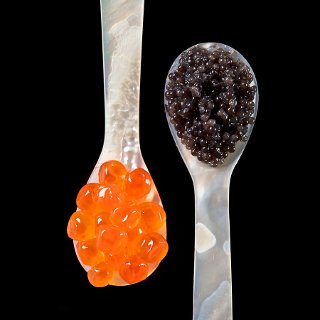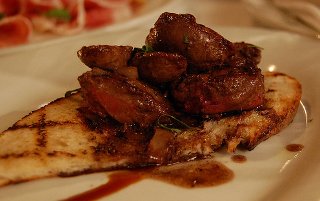4 Most Common Nutrient Deficiencies on the Paleo Diet

Yes, even on the world’s most nutrient-dense diet, it’s still possible for some people to be short of a few nutrients. However, as the Hitchhiker’s Guide to the Paleo Diet would say, in large, friendly letters on its cover: DON’T PANIC.
Mark Sisson has written great posts about nutrient deficiencies, but I was curious whether they were actually observed in everyday people who follow the paleo diet. After all, if people are reading and following Mark’s advice, are those deficiencies still a problem? Then it hit me: “Dude! You have access to thousands of journals, why not find out for yourself?”. Yes, I really do talk to myself like that.
So, I anonymously selected 26,433 random food journals from PaleoTrack that had 1500 to 2500 total calories (to exclude intermittent fasting days or atypical bingings days). To respect everyone’s privacy, I wrote some code to automate the calculations so I didn’t have to look at a single journal.
After the number crunching, I only found 4 nutrients that commonly fell short of the recommended daily values (DV) on average. Or, should I say, “barely” fell short. Mostly Harmless.
Surprisingly, they were not all the same ones that Mark identified. I guess you really are following his advice. But… not all of his suggestions. Let’s dig a little deeper.
Calcium (69% DV)
This one is no surprise. Dairy is the Standard American Diet (SAD)’s primary source of calcium. If you eliminate dairy from your diet, you will have a harder time reaching the DV that was defined for people who follow the SAD.
However, 69% is pretty darn good. Actually, a recent controlled feeding study found that increasing protein intake, from 10% to 20% of calories, improved calcium absorption in a group fed a low-calcium diet. The journals that I selected and compiled had an average protein intake of 24.8%. So, perhaps 69% is enough. After all, our ancestors had strong healthy bones despite not eating dairy.
If you’re still worried, there are plenty of calcium-rich foods that you can eat on the paleo diet. Read to the end of this post to find them.
Magnesium (89% DV)
At 89% DV, it’s hardly a deficiency. Yeah Paleo!
In real, whole foods, calcium and magnesium often come bundled together. So, if you eat more calcium-rich foods, magnesium should also improve. Unfortunately, I wasn’t able to find a study that showed whether magnesium absorption improves when protein intake increases. But, as Tom from the Fat Head movie would say, “Mother nature isn’t stupid”, so it wouldn’t surprise me if absorption did improve.
Read on to the end to find some magnesium-rich foods.
Folate / Folic acid (91% DV)
I don’t know if 91% would be considered a “deficiency”, but I feel we shouldn’t neglect this one, especially women who are pregnant or are planning on getting pregnant soon. Women with folate deficiency who become pregnant are more likely to give birth to low birth weight and premature infants, and infants with neural tube defects.
Thankfully, there are plenty of paleo foods rich in folic acid. Read on to find some examples.
Iron (84% DV)
Honestly, I was very surprised with this one. How could a diet high in animal source foods be low in iron? I had to dig a little deeper to get a clearer understanding.
First of all, not all animal source foods are high in iron. The range varies a lot. Example: 6 oz of game meat like bear will provide 100% of your iron DV, while it would take 24 oz (1.5 lbs) of lean ground beef to reach the same amount of iron. Then you have poultry. It would take 61 oz of skinless chicken breast—that’s 3.8 lbs!!! Hope you’re hungry.
So, if you want to reach your iron requirements, you need to pay a little more attention to which cuts of meat you eat and vary accordingly.
Paleo Superfoods
Instead of listing food sources for each nutrient, here are a 3 paleo superfoods that you can hopefully introduce into your meal plan to increase these 4 nutrients.
Caviar and roe

Yes, some caviar is considered a luxury food, but many other types of fish eggs are eaten routinely by commoners. The Swedes buy it in tubes and squeeze it onto their crisp bread for breakfast.
A single tablespoon of red or black caviar packs a super punch of nutrients:
- 12% of your magnesium DV
- 11% of your iron DV
- 4% of your calcium DV
- 2% of your folic acid DV
But it’s also rich in other nutrients, 53% DV of vitamin B-12, 15% DV of selenium, and also contains several other B vitamins, vitamin A, E, and D.
Oh, did I mention it also provides omega-3 fats? 608mg of DHA and 439mg of EPA. That is more than most fish oil supplements. That should improve your omega-6 to omega-3 ratio.
Sprinkle some on your eggs, plantain pancakes, cucumber slices, homemade sweet potato or taro chips, etc.
If you can’t find caviar or roe at your local grocery store, you can always find it on Amazon.
Chicken Liver

“Ewwwwww. Enough with the liver!”
I know, everyone in the paleo sphere is telling you to eat liver. But, before you close your browser and start running to the hills, let’s look at why it’s a superfood and how very little of it is enough to improve your folic acid and iron.
A single chicken liver, weighing only 20 grams, will provide:
- 29% of your folic acid DV
- 13% of your iron DV
And it’s also a powerhouse of other nutrients, 56% DV of vitamin B-12, 53% DV of vitamin A, 24% DV of selenium, several other B vitamins, phosphorus, manganese, copper, zinc, and even a little magnesium and calcium.
Are you telling me you can’t eat a single chicken liver? Come on, it’s probably only a single bite for most of you.
Try a chopped liver recipe. It’s easy to do and will last a few days in the fridge so you can eat a little everyday or make a weekly meal out of it.
Chicken livers are dirt cheap and can be found in most grocery stores or butcher shops.
If you can’t find them, you can buy some chicken liver pâté instead. Read the labels and pick one that is made from chicken livers and doesn’t contain wheat or other unwanted fillers. I like my pâté on the side with my scrambled eggs. My kids like it in celery sticks.
Leafy Greens

Yes, EAT YOUR GREENS!!! Mark Sisson told you a million times to eat them, and there’s a reason why. They are rich in all four of these nutrients and many more. Just do it!
Recipe: Indian Delhi Saag
I’ve found the easiest way of eating enough greens is to make Indian Delhi Saag. It is easy to make and compacts 2 lbs of greens down to only 3 cups.
A single cup serving provides:
- 144% of your folate DV
- 42% of your magnesium DV
- 35% of your iron DV
- 31% of your calcium DV
Yes, all that from a single cup of saag. And it’s delicious. It also provides 1856% DV of vitamin K, 620% DV of vitamin A, 247% DV of vitamin C, 104% DV of manganese, 47% DV of vitamin E, 28% DV of vitamin B-6, and the list goes on, and on, and on. It would be simpler to list the nutrients that it doesn’t provide: Vitamin B-12. That’s it! But you don’t have to worry about B-12, the average journal on PaleoTrack contains 508% DV of vitamin B-12.
Green Smoothies
If Indian is not your thing, you can do like many others and buy a juicer and make green smoothies instead. They are so popular that there’s even a Paleo Smoothies Recipe Book.
Supplements
Of course, if you’re a creature of habit and you don’t want to change, there’s always supplements. It’s not as efficient as real food, but it’s better than nothing.
- Calcium. The recommended daily value is 1000mg per day (1200mg for women and men above 51 and 71 respectively). If you’re not already taking a vitamin D supplement or getting enough sunlight, then get a calcium supplement with added vitamin D, it helps with the absorption.
- Magnesium. The DV is 400mg per day.
- Folate. Also known as folic acid or vitamin B-9, the DV is 400mcg per day (500-600mcg for lactating or pregnant women).
- Iron. The DV is 18mg, but the Tolerable Upper Intake Level (UL) for adults is 45mg per day, so be very careful if you choose to supplement. Iron poisoning is a serious thing. You should ask your doctor first.
If you’re worried that perhaps you suffer from more than these 4 common deficiencies, then you can simply cover your bases by taking a daily multivitamin.
Conclusion
Overall, the paleo diet is nutrient-dense and can provide all the nutrients you need for health, fitness, and longevity. It far exceeds the average American diet which, one study found, often lacks vitamins A, C, D, E, and minerals calcium and magnesium.
After compiling 26,433 journals, I only found 4 nutrients that were, on average, below the recommended daily value. Every other nutrient was above.
| Minerals | DV% |
|---|---|
| Calcium | 69% |
| Iron | 84% |
| Magnesium | 89% |
| Phosphorus | 143% |
| Zinc | 108% |
| Copper | 119% |
| Manganese | 177% |
| Selenium | 216% |
| Vitamins | DV% |
|---|---|
| Vitamin A | 397% |
| Vitamin E | 130% |
| Vitamin D | 159% |
| Vitamin C | 351% |
| Thiamin | 279% |
| Riboflavin | 270% |
| Niacin | 232% |
| Pantothenic acid | 124% |
| Vitamin B-6 | 278% |
| Folate, total | 91% |
| Vitamin B-12 | 508% |
| Vitamin K | 408% |
Simply introducing a few of these paleo superfoods into your routine could be enough to reach over 100% on every nutrient.
How does your nutrition compare to the average PaleoTrack journal?
Find out now by joining PaleoTrack. It’s free!